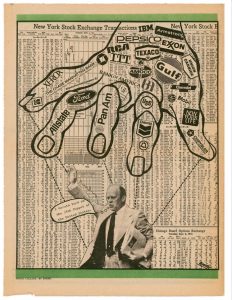 Well… when i write Blast Theory, i mean one of its members: Matt Adams (i took some extremely loosy pictures of him during his talk, so the portrait of him was stolen on The Age.)
Well… when i write Blast Theory, i mean one of its members: Matt Adams (i took some extremely loosy pictures of him during his talk, so the portrait of him was stolen on The Age.)
Matt Adams started by giving a brief history of Blast Theory then explained with more details their latest work: The Day of the Figurines.
In the beginning, Blast Theory was particularly interested in British clubbing culture, they were trying to make out art in clubs in the early ’90s. Clubbing at the time wasn’t a branded activity like it is now (clubs selling their t-shirts and other “merchandising”.) Matt background is in theater and he was interested in how people were staging themselves in clubs. In clubs you have a certain control: you can decide to be and stay a spectator or to be the center of attention, to become part of the show. Clubbing were a very fluid space. THe other main interested was: how do you find and build an audience? how does it form? Visual art is usually shown in galleries, galleries have their audience. Artist have a very personal dialogue with their work and get their audience via the gallery. So matt wanted to find other ways to find new audience.
This reflected also a political interest influenced by the Russian constructivism of the ’20s and also by the radical forms of theatre that emerged in the 60s and 70s.
Matt wanted to see how culture could have a transformative role and to make art works which are not narrative. Stories have limits. None of us lives a linear life, our life is more fragmented. Looking for works which would be non-narratives while being also accessible for a broad public, he found out that there was already something out there that had these two qualities: Games!
Games are entertainable, readily understandable, interactive and non-narrative.
In the meantime, he had lost interest in clubs which had lost their fluidity.


Can You See Me Now?
Blast Theory’s first attempt to use the street and mobile phones was Can You See Me Now?, commissioned in 2001 by the Art Council of England and the BBC. Why using mobile phones? in 1998-1999, the use of mobile phones was rising, they were becoming ubiquitous and thus became a new transformative technology. Internet is not as transformative as mobile phones. A small number of people have internet at home in some countries. Mobile phone is accessible, there’s a very low barrier of entry (unlike the walkman which was a status symbol when it was launched). A study in the UK showed that the proportion of homeless people who own a mobile phone is higher than the proportion of people who have a home and a mobile phone. The mobile phone is also the first thing that immigrant buy when they arrive in the UK. The device is unusually well disiminated in our culture.
In 2000 and 2001, location and 3G were coming with all kinds of promises. Blast THeory wanted to come up with uses of these technologies which were not revolving around commerce and marketing (find the nearest McDonald’s, etc.)
As Sadie Plant said “The mobile phone has privatized the phone book.” It’s an act of trust and reciprocity to give your phone number. In 2001, Blast Theory was thus looking for ways to address these factors. Matt Adams said the Can You see me now was rather primitive, it’s a chase game in which online players and players in the streets compete against one another. Why such a simple format? Two reasons: the technical challenges were big and it was necessary to make players easily understand what was going on.
The game was developed in collaboration with the researchers of the Mixed Reality Lab in Nottingham.
People found the game very adrenaline-charged, even if they were only playing online. The walkie-talkie audio element made the game very compelling: listening to the player in the street struggling with traffic, snow, breathing heavier because he or she was running up a hill, etc. The audio element made the players feel intimately connected.
 Uncle Roy All Around You
Uncle Roy All Around You
Blast Theory had some frustrations about the game: it was a short and specific experience, not intellectually engaging over a long period of time. The group wanted to extend this kind of experience, so they came up with Uncle Roy All Around You. The players are not competing anymore but collaborating to search the city for Uncle Roy. 20 players online and 12 players swapping information. Uncle Roy is always one step ahead and players never find him. They will finally get to his office but will have left already when they arrive there. Blast Theory ask people: if someone you don’t know asks for your support, will you offer your help? They took the phone numbers of the people who said “yes” and gave each number to another person, saying that during one year that particular person would be there in case of need. Blast Theory was interested to see what kind of community they would be able to build like that. Two or three years ago people were not sure that it was safe to shop online, there’s also still questions about trusting people on the net and in chatrooms. Matt Adams gave the example of suicide chatrooms. He commented in particular the famous example of Japanese chatrooms where depressed people get in touch with each other and arrange to meet and commit suicide together. Paradox: online space is accused of being hooribly corrupted, sick and twisted example of the worst internet can offer. On the other hand, many people around the world feel depressed and find confort in discussing with other people who feel the same and won’t jude them.
Back to the mobile phone numbers swapped for Blast Theory’s experiment: some people did meet as a result, other never used the number but kept it and felt a connection with the stranger out there who had agreed to be there in case they needed to talk to someone.
There was a frustration with Uncle Roy: developing works on phones is extremely difficult: mobile phones are hostile to people working on then and phone operator do not want you to mess around with the devices either. So for Uncle Roy, Blast Theroy was lending the phones. As they only had a small number of phones, the performace was always on a small scale.
Besides it’s difficult to develop something new for every mobile phone that exists. You must make 32 types of the same ringtone to cover the different handsets. So for the Day of the Figurines, Blast theory had to use something that all mobile phones had in common: either the voice or the SMS. They chose the SMS.
 The Day of the Figurines
The Day of the Figurines
Last July they tested the Day of the Figurines in London, at the Laban Center. They improved the game for Barcelona. The next Day of the Figurines performance will be in Berlin in September and it will last 24 days (only 3 days at Sonar.)
Blast Theory’s concern is to let people play whenever they want to. They want to look at the culture of SMS: they can be either annoying or a welcome intrusion. FOr the new project, they wanted to keep the balance right. The goal is to have players regard the figurine as part of their life. Another concern was to make it simple, to let any kid break into the game and have fun with it. There’s no more rule than necessary. For example, one of the players had decided that his figurine had stolen a BMW.







